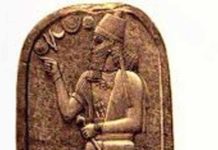
Herod owes his rise to ‘king’ to his ability to realise the true nature of the political scenarios which were being played out at the time. He was initially an unpopular military commander of the northern region. After Caesar’s death, he backed Octavian (Augustus) and reigned from 41-4 BCE.
Herod was given the title ot Herod the Great, mainly because of his vast building programme and the extent of the kingdom over which he ruled. Herod used the huge profits from trade to undertake a series of mammoth building projects – some of the most impressive in the world. He built cities, palaces and fortresses in many areas inside and outside his kingdom.
Herod’s motives behind his building projects
Herod’s motives for his building programme were many. Firstly, he enjoyed luxury and wanted to be remembered for the grandeur and opulence of his buildings and lifestyle. However, because power was tenuous at the best of times, he needed to ensure his safety, which is why many of his buildings are palaces, built like fortresses.
In the Bible, Matthew 2: 1-18 recounts Herod’s fear of threats to his position. This is also why many of his palaces were built in secluded areas. Herod also built elegant country estates, such as his winter palace near Jericho.
Buildings in Jerusalem
Herod built his central palace in Jerusalem. He also rebuilt the Hasmonaean citadel and built three multi-storied towers (the Upper Palace). This was where Jesus was brought before Ponius Pilate. Herod’s enlargement and embellishment of the Temple in Jerusalem was an amazing feat.
Herod increased the size by building huge encasement walls, filling them with soil to create a large trapezoid on which to build a larger temple. It took 10,000 men over ten years to build the walls around Temple Mount. Temple Mount was protected by a military fortress known as Antonia, honouring Mark Anthony. Herod also built a hippodrome, theatre and aqueduct amongst other projects in Jerusalem.
Masada
Herod’s most famous fortress has to be Masada, built on the top of a mountain near the Dead Sea. His buildings were extensions and additions to the existing Hasmonaean buildings. There were water channels and cisterns, to provide not only water for drinking but also water to irrigate the agricultural plots.
Huge storehouses were built, which contained food as a precaution against siege. The summit was enclosed by a wall with 37 towers in it and surrounded the whole settlement. There are other buildings still to be excavated at Masada, including several palaces of different sizes.
Herod’s other legacies
Herodium is the only site to use Herod’s name. This wonderful site, on the edge of the desert, had a summer palace, the district capital and the king’s burial estate. Herod built an artifcial cone-shaped mountain on which to place his Mountain Palace Fortress. Sadly this palace was destroyed in 70AD, during the Great Revolt.
Herod also restored Alexandrium in 38BC and Hyrcania, both of which were rebuildings of Hasmonaean fortresses. Josephus describes the rebuilding of Machaerus in the Bible – War 7:166-189.
Herod, always mindful of his tenuous position, turned to the construction of public buildings and even cities. He rebuilt two cities and named them after Emperor Augustus – Samaria-Sebaste and Caesarea-Maritime. Sebaste included a temple to be used for the sole worship of Augustus. Caesarea was built around a large port and served as an economic and political connection to Rome. It also included a theatre, a hippodrome, a pagan temple and a promontory palace and an enormous aqueduct.
Herod tried to accommodate everyone’s religion and so built pagan temples, theatres, stadia and hippodromes in many areas. Herod also initiated building projects outside his kingdom, according to Josephus. If it wasn’t for Josephus’ Biblical accounts, we would be ignorant of many of Herod’s wonderful building achievements.
Sources:
- Bimson, JJ; Kane, JP et al. (eds) 1985. New Bible Atlas. London: Intervarsity Press
- Perego, Giacomo. 1999. Interndisciplinary Atlas of the Bible: Scripture, History, Geography, Archaeology and Theology. London:St. Pauls.
- The Times Atlas of the Bible. 1987. London: Times Books






